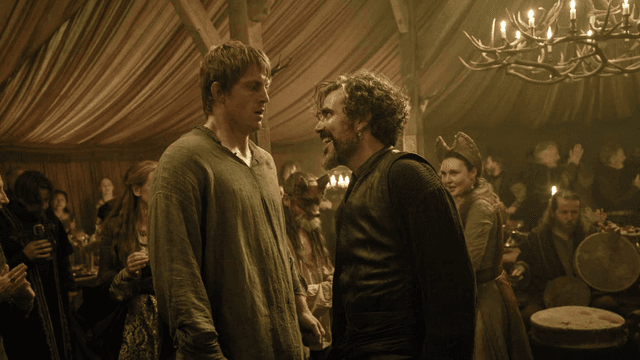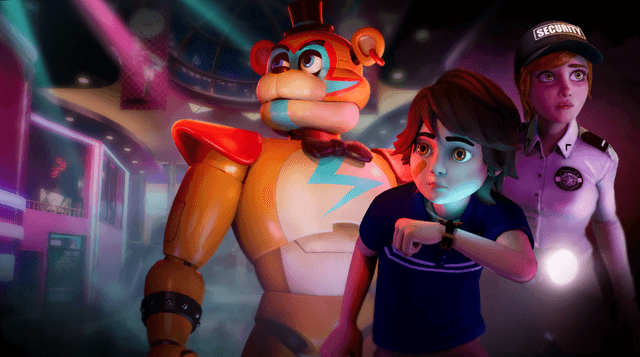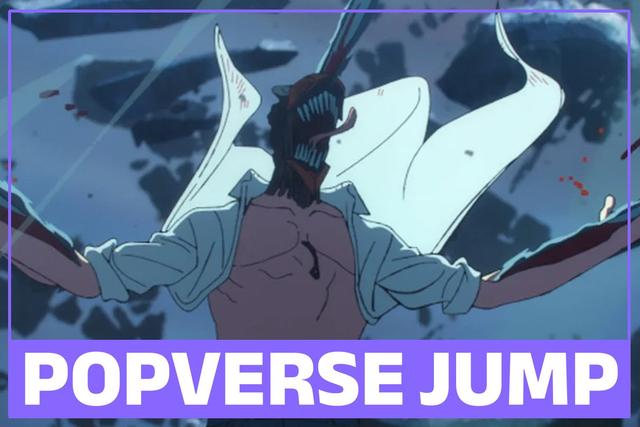If you click on a link and make a purchase we may receive a small commission. Read our editorial policy.
The Jedi, The Way, and more: Inside the religions of Star Wars
There are a bunch of different religions in the Star Wars Universe. What are they, and what's their deal?

Watching most Star Wars stories, it’s easy to think the only real religion a long time ago in a a galaxy far, far away was the following of the Force. But as some of the recent Star Wars shows on Disney+ have highlighted, there are other religious traditions out there in the Star Wars universe that have nothing to do with super powers or some hidden cosmic web of life.
And even amongst those who follow the Force, there’s more variety than you might think...
The Jedi

It isn’t a Star Wars trilogy if there isn’t at least one moment where someone explains the Force, amirite? And often (but not always), the ones doing the explaining are Jedi, members of that group of Force-sensitive people who commit their lives to becoming in touch with the movements of the Force and learning to draw upon it for insight and ability.
The Jedi describe the Force as the sum collective life force of all living things. “It surrounds us, it penetrates us, it binds the galaxy together,” says Ben Kenobi, while Luke nods with a look that says, “Whuh?”)
The Force seems to be like a river of life and goodness that some can draw upon. For the Jedi 'feeling the Force' is about trying to connect with that life force and let it guide your choices in the moment and beyond.
The Jedi have temples where they take classes, practice meditating, and develop their skills, including fighting skills—Jedi have often served as peacekeepers or military leaders. But mostly their instruction and growth comes in the hands of a mentor who brings them into the field and lets the experiences they have itself be the young Jedi's classroom.
Their goal of selfless dedication to the Force has led the Jedi to institute mandatory commitments to celibacy and lifelong obedience to the Jedi Council. They are above all not to have undue attachments.
A central element of Jedi life involves learning how not to be controlled by one’s emotions. “Darker” emotions like anger, grief, or lust are considered dangerous, insofar as they can warp one’s point of view and lead one to the Dark Side of the Force, where selflessness and balance are replaced with selfishness and aggression.
The Sith

Like the Jedi, the Sith believe in the Force, and have temples and meditation practices by which they attempt to connect with it. But the Sith follow the Dark Side of the Force. For them, the Force is fundamentally a power source to be used to generate extraordinary, nature-defying feats like lightning or near-immortality. Where the Jedi teach that anger and self-centeredness are to be avoided, the Sith encourage such emotions, arguing that they are the means to real power.
For the Sith there is no community like one finds amongst the Jedi. Instead there is always just one Master who has ultimate and absolute authority, and a second considered his apprentice.
Followers of the Force and the Dark Side

Where the Jedi and the Sith are in some ways like priests of their belief systems, historically both groups have had others around them who worship the Force. For the Sith this includes both other Force-sensitives like corrupted Jedi who follow the Dark Side and serve the needs of the Sith, and others like the Sith Eternal, who in The Rise of Skywalker aid Darth Sidious and pray for his good fortune.
On the flip side are those who believe in the Force as a sort of generalized source of goodness at the heart of all existence which one can hope in. So at important moments some will say, 'May the Force be with you.' Some such people try to commune with the Force and make pilgrimages to Jedi temples, where the connection to the Force is stronger.
The Dagoyan Order

Amongst those who follow the Force, one group that stands out is the Dagoyan Order, a group of Force-sensitive beings on the planet Bardotta introduced in the Clone Wars animated series. Unlike Jedi, the Dagoyan mystics don’t use the Force in an active way, but instead simply drift within the flow of the living Force, living in its harmony and learning things about the future intuitively in the process. And at times their meditation can have a physical Tai Chi-like component.
Bardotta is also the home for the Frangawl Cult, which worships the demon Malmourral, and rips the living Force out of Dagoyan mystics in ritual sacrifices at their underground temple.
The Gray Jedi

Gray Jedi are understood as either being Jedi who no longer recognize the authority of the Jedi Council and operate independently, though for good; or as Force users who refuse to accept the binary of good vs. evil when it comes to the Force, and consequently are able to generate powers used by either Jedi or Sith.
While Star Wars video games and literature have referred to this 'third way' between Sith and Jedi as the Gray, so far the films and shows have not explored this concept. Some believe that Ahsoka Tano, former apprentice to Anakin Skywalker who left the Jedi after being falsely accused of bombing a temple, but continues to use the Force for good, may be a Gray Jedi. But she has not identified herself as such…yet.
The Nightsisters

An ancient clan of witches living in Dathomir, the Nightsisters are one of the most clearly defined religious groups in Star Wars canon. They have a temple at which they pray and perform rituals, led by a religious leader known as the Night Mother, and they have a code by which they live, loyalty to each other.
Their religious rituals are able to generate an incredible array of powers, from levitation to the complete physical and psychic transformation of a living person and the resurrection of the dead. The Night Mother is the main locus of that power.
There’s some debate as to where their power comes from. While during the Clone Wars Night Mother Talzin asserted she is not a natural Force user, in Star Wars Rebels Darth Maul asserted that the Nightsisters are in fact Force sensitives whose powers come from the interaction of their sensitivity with the unique energies of Dathomir.
During the Clone Wars the Nightsisters were wiped out by the forces of Count Dooku. But their spirits continue to live on in some form on the planet.
The Way of the Mandalore

The Way of the Mandalore is the religion of a small, secretive sect of Mandalorians known as the Children of the Watch, who survived the Empire’s purge of Mandalore during the Clone Wars. This sect believes that the fall of Mandalore happened because the people strayed from the creed of the community. Led by the Armorer, they see themselves as preserving the proper ways of Mandalore until such time that they can bring those traditions home.
The creed of the Mandalorians is based around loyalty and solidarity. The profits from their jobs are returned to the community, to support its needs and the needs of the foundlings taken in by the Mandalorians. Foundlings are of central importance to the community; they are understood to be its future.
Made from the Mandalorian steel beskar, a Mandalorian’s armor is an expression of their identity. As spiritual leader and arbiter of the Way, the Armorer chooses each new piece of armor that a Mandalorian receives, based upon their accomplishments, and eventually chooses a sigil for them, as well.
For the Mandalorians, the wearing of one’s helmet is a sacred duty, and the removal of one’s helmet before others, whether by choice or at another’s hands, results in one’s immediate expulsion from the community. The only means of redemption is the living waters in the mines beneath Mandalore.
Stone and Sky

On the planet Ferrix, while the people don’t acknowledge a god per se, they do have religious-like traditions. When a person on Ferrix dies, their remains are cremated and the ash mixed into the materials used to make bricks. That brick is then used in new construction. This is understood as 'being lifted.'
To honor the dead, small marching bands gather people from all parts of town to a central square, where the community chants 'Stone and Sky' and a hologram of the dead is played in which they share their final thoughts. Both the brick and their final thoughts are understood as a way of lifting the community up, and are a source of great inspiration for the people. To be “worthy of the stone” is considered a great honor.
See how the Star Wars story flows with our Star Wars watch order.
Follow Popverse for upcoming event coverage and news
Find out how we conduct our review by reading our review policy
Let Popverse be your tour guide through the wilderness of pop culture
Sign in and let us help you find your new favorite thing.
















Comments
Want to join the discussion? Please activate your account first.
Visit Reedpop ID if you need to resend the confirmation email.